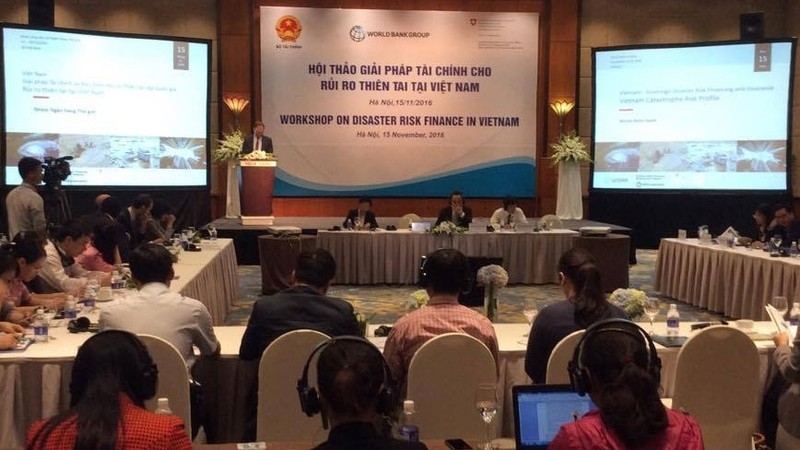Sebastian Eckardt, Lead Economist at the World Bank (WB) in Vietnam, made this recommendation at a workshop on disaster risk finance and insurance, which was held in Hanoi on November 15.
Since 2013, the WB has supported Vietnam in improving the State’s disaster risk financial and insurance policies by developing a private catastrophe risk model for the country, Eckardt said.
This model provides the Government with a better assessment of the likelihood and severity of losses from catastrophes. It can also be used to plan for the financial impacts of catastrophes before they occur, he added.
According to the disaster risk model presented at the workshop, Vietnam is likely to suffer an average annual economic loss of VND30.2 trillion (US$1.36 billion) due to floods, typhoons and earthquakes. Residential and public assets account for 65% and 11% of the total damage, respectively.
Within the next 50 years, Vietnam has a 40% chance of experiencing damage exceeding VND141.2 trillion (US$6.35 billion) as a result of typhoons, floods or earthquakes, with North Central locales that have higher poverty rates tending to face much greater losses, it said.
The Government has established a number of different financial tools to ensure the resources for disaster response and reconstruction, including budget reserves at both the central and local levels, reallocation of the State budget and reserves, financial reserve funds, and foundations for disaster prevention and control, as well as risk transfer tools such as insurance and aid from donors.
However, current sources of funding for disaster response and reconstruction have remained limited and dependent on the budget. Meanwhile, Vietnam has yet to develop a comprehensive strategy for regulating and fully operationalising the capital sources that can be mobilised, particularly at the local level.
Deputy Finance Minister Nguyen Huu Chinh highlighted the necessity for Vietnam to develop new financial solutions, including disaster risk insurance, aiming to reduce the burden on the state budget.
Participants suggested that Vietnam develop a cost-effective financial protection strategy, considering it an integral part of a master programme on disaster risk and climate change management. The policy, legal, institutional and operational frameworks for the fund for the management of natural disasters should be reviewed with the aim of strengthening the financial resilience of the locales, they noted.
















